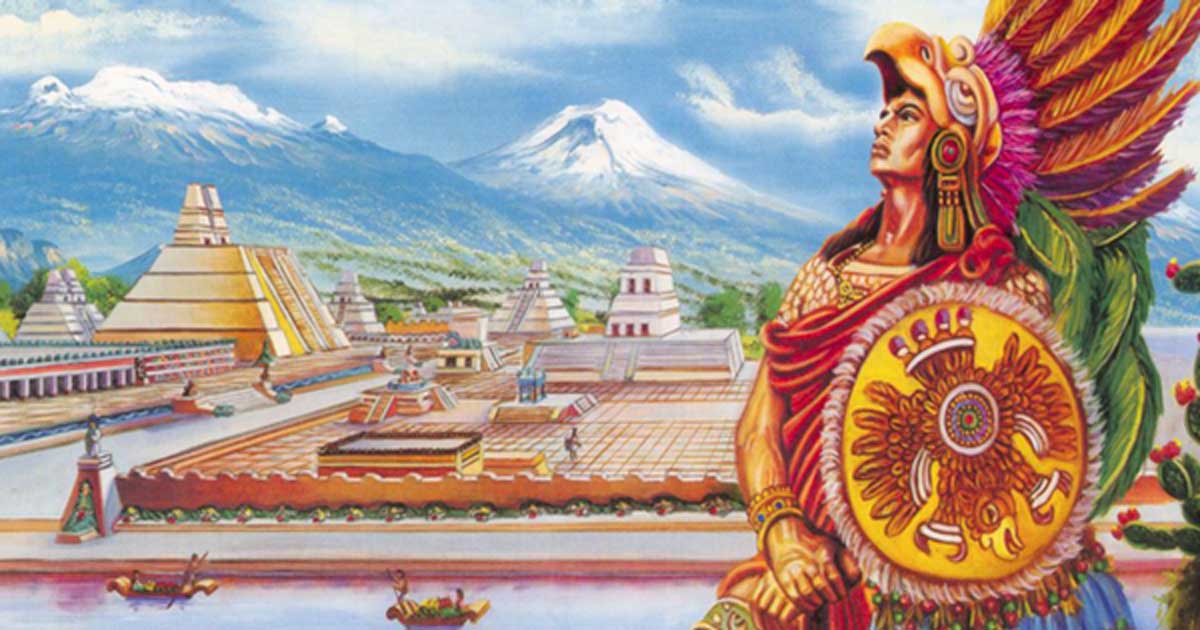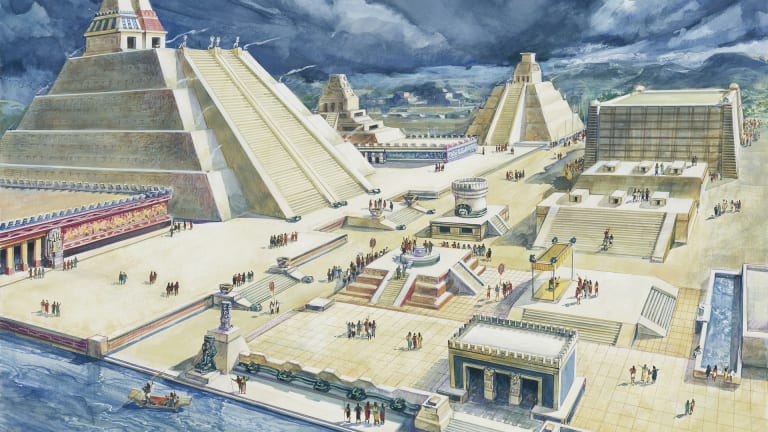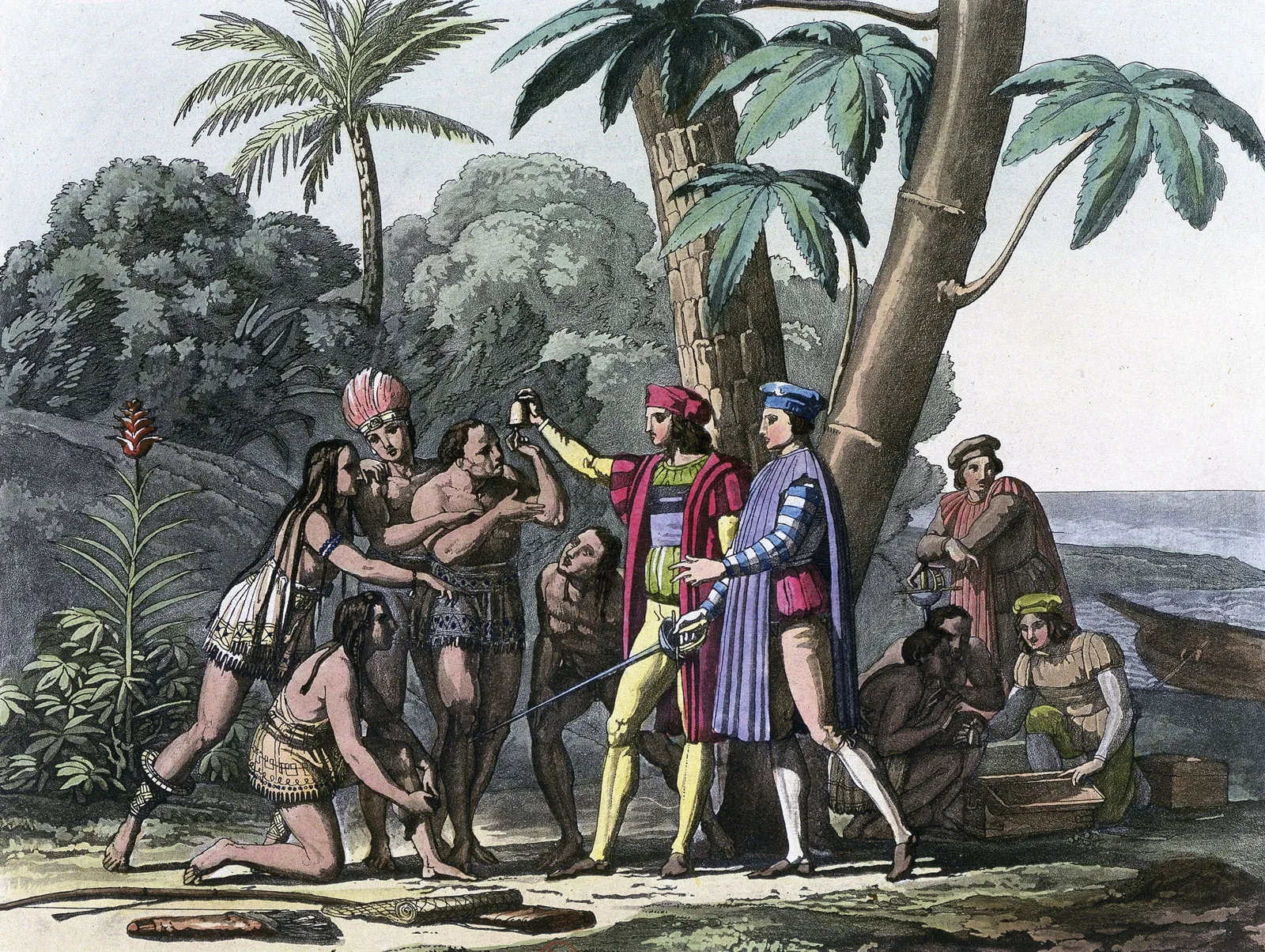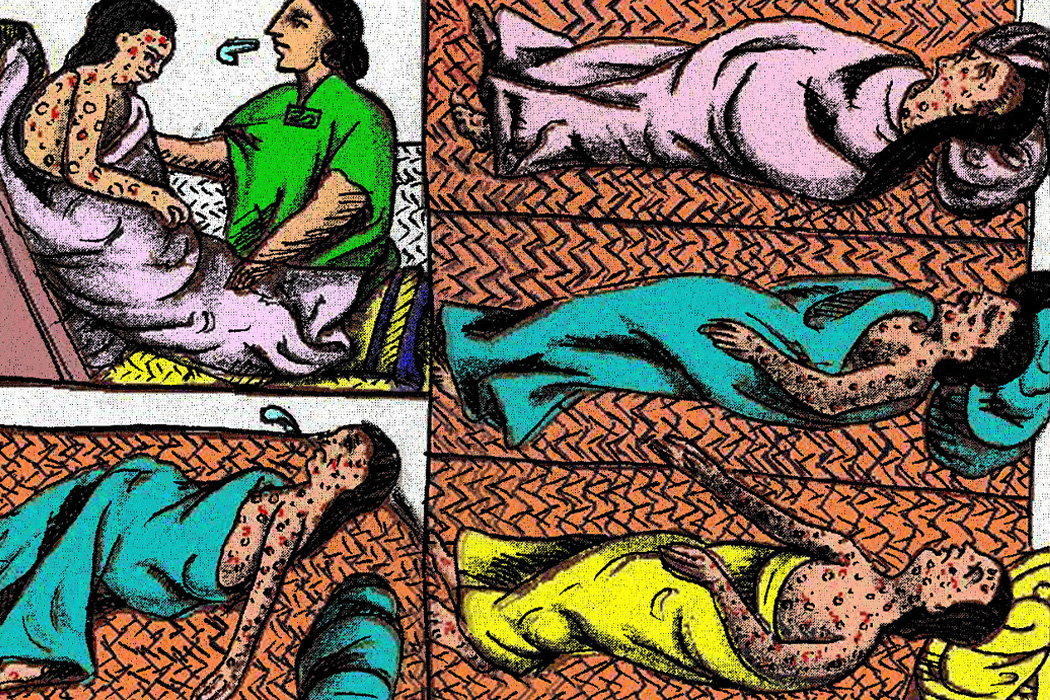By John Dedes,
Although the mass murder of people by an “invisible enemy” is new for most humans today, it has been an issue for indigenous communities. It has led to the extinction of many native groups.
In this article, we will present cases of native groups in the region of North America, which had been infected by diseases that the Europeans were carrying when they came to colonize the land of indigenous groups.
After all, the deadly consequences of severe epidemics are not new.
Despite the extent of the COVID-19 pandemic, there have been more severe diseases for particular groups that would have adapted to the new conditions had it not been for the infection of thousands of natives.
The Aztec Empire
This text, as mentioned before, focuses on the indigenous groups found in North America. Even though they were the inhabitants already living in the territory, they found themselves giving in to the unfortunate events and ultimately providing extra space for the people from Europe.

The first example is the exploration of Hernán Cortés (1485-1581), who found the capital of the Aztec empire in 1519, Tenochtitlan, and the fact that this territory was more significant than the Spanish city of Granada, urged him to settle in the region, not as an indifferent visitor but as a Conquistador aspiring to expand.
What is intriguing, however, is that the Spanish not only would not defeat the Aztec empire in an easy expansion, but they would be the ones who would experience significant losses of territory and people until the unfortunate event of the epidemic helped them.
The Spaniards were defeated in 1520 in the capital of the Aztec empire, and a significant number of these Europeans were assassinated. Nevertheless, this was a temporary setback for the colonizers, who returned with the help of neighboring native communities.
Additionally, the primary weapon of the Spanish against the empire was the smallpox epidemic which struck 1521, the capital of the Aztecs. Some accounts show that one enslaved Spanish person passed on the disease. It contributed to the death of many people, not only because they were infected, but also from hunger since they did not have help from others or food supplies.
The Spanish, from which a vast majority of the fighters in the war of 1520 had left, came back, only to find an empire of the Aztecs destructed, the army ready to surrender, and the people dead in their houses.
Generally, epidemics and diseases played a considerable role only in the deaths of thousands of indigenous people. The newcomers had caused them; ironically, the former had infected a new world outside Europe. Epidemics were responsible for the death of vast groups such as the Caribs, the Arahawks, the Boethuks, and the Meso-American empires.

Furthermore, not only the smallpox epidemics lasted until the 19th century. Such diseases contributed to the death of more than two million natives (Aztec Empire, Mayan States, Inca Empire, Brazil). However, the Europeans were able to be excluded from this number, since they had developed varying levels of immunity and when at risk, they tended to be more careful.
The debate of historians over the magnitude of such diseases and the destruction caused by conflicts and wars between indigenous people is essential. Despite the severity of the mortality rates and the unavoidable deaths due to lack of protection, no one can accurately depict how many people lived before and after the epidemics.
However, historians have partially understood the origin of such diseases and sometimes showed the interactions that led to the infections.
For instance, historians believe that smallpox killed 90% of the natives in Massachusetts bay. The mohawk villages that were contaminated had cultivated strong relations with the Dutch and then passed it on to indigenous people until Lake Ontario in 1636.
Nevertheless, the accounts in many cases were even problematic in space, and there is no idea of what happened beyond the western side of Lake Huron.
The smallpox epidemic has been a critical factor in many populations’ destruction and disappearance. Some inquiries show Jacques Cartier (1491-1557) and his company being accountable since two of the territories he visited in 1535-1542 (Stadacona, Hochelaga) were gone by the end of the century.
The St. Lawrence Iroquoian population is also considered a victim of such an epidemic. However, the problem is that there are also accounts that show Wendat people killing the men and stealing the women of the region, contributing to the disappearance of the people in the whole region.
The Wendat Confederacy
When we talk about the Wendat Confederacy, we analyze one of the most influential traders of the 17th century for Canada, and had it not been for the contamination of the epidemics, this community would be one of the strongest in North America.

We do not know whether the introduction of smallpox in the region resulted from infected settlers from Europe or through the Mohawk lands and villages, which were also contaminated. Nevertheless, we know that this contributed to the death of the vast majority of people in the Wendake (Huronia) in only one decade, until 1649.
Many Wendats blamed the Jesuit missionaries since they had hosted them and many Europeans in general since the early 1630s. The values and the perception of this community were also a factor of infection since the people thought this was a malicious spirit and held multiple ceremonies for all the dead, which increased the risk of contamination.
After the death of most indigenous people in the community of the Wendat, the Haudenosaunee, their longstanding enemies, found the perfect chance to conquer their land and face little resistance.
This conflict was named “Mourning Wars”, and after the Haudenosaunee took the opportunity to spread their influence to the West, the Iroquois were also interested in gaining some Wendake land for revenge, victory, profit, and in replacing the lost population of Mohawk.
Two other epidemics were on the rise at the beginning of the 18th century (1702), covering most of the Great Lakes region and around 1736 to 1738 in southern Manitoba. However, the natural outburst of the smallpox epidemic took place around 1780 and appeared to be originated from the Spanish.
At the same time, the Prairie disease collided with smallpox in British Columbia. Historians believe that the Northwest populations of the Pacific were lost by more than 85%.
In most of the indigenous communities affected by the epidemic, the demographic characteristic was destroyed. The fact that these populations were dependent on births and immigrants would lead to a significant change after mortality rates were higher than birth rates.
The effects of the Columbian Exchange System
The Columbian exchange system, trading between indigenous people in North America and Europeans, soon proved problematic mainly due to the introduction of epidemics from the Spanish population under the leadership of Cortés that started with Mexico.

It is a shame to see how the indigenous people hosted the Europeans and how the latter managed, even unintentionally, to lead to the death of significant majorities of people and populations.
The immunity of Europeans worked pretty well, and there was no outburst of the epidemic that affected settlers from Europe in Canada.
Nevertheless, Europeans also suffered after contact with the well-known affliction of syphilis. This is believed to be of Caribbean origin and passed to the Europeans by the Americas after finding natives’ skeletons infected.
Nonetheless, people are still curious about the origin of syphilis as the timing is peculiar. Only after two years of having contact with the Americas in 1492 did syphilis spread across Italy, and France, which one might assume was already infected.
COVID-19 might have been one of the most severe diseases in the modern world. However, many cases in North American history show destructions of more considerable significance for native groups, even without having the same extent as the 2020 pandemic.
References
- Belshaw, J.D. (2015). Canadian History: Pre-Confederation. Victoria, B.C.: BCampus. www.opentextbc.ca. Available here
- B.G. Trigger, ed., Handbook of North American Indians, volume15, Northeast, (1978).
- J.A. Brandão, “Your Fyre Shall Burn No More:” Iroquois Policy toward New France and Its Native Allies to 1701 (1997).
- Heidenreich, C.E.. “Wendat (Huron)”. The Canadian Encyclopedia, 10 October 2018, Historica Canada.




